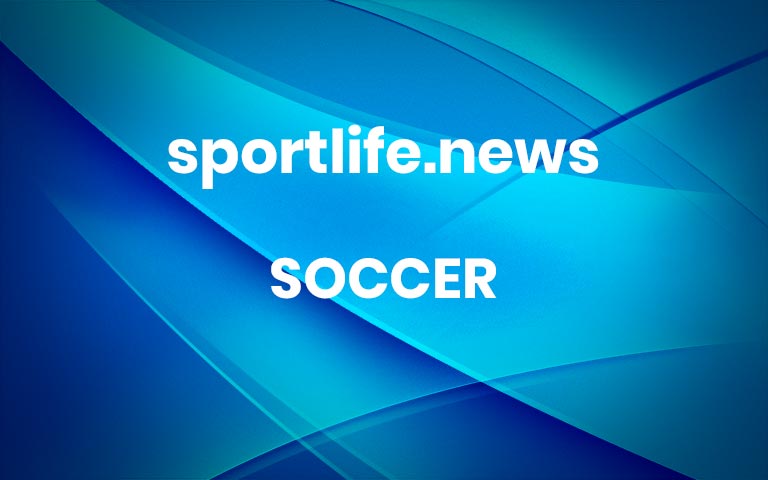Mike Tomlin Reaches Another N.F.L. Postseason With Fewer Black Peers
AdvertisementContinue reading the main storySupported byContinue reading the main storyMike Tomlin Reaches Another N.F.L. Postseason With Fewer Black PeersThe Pittsburgh Steelers’ coach hasn’t had a losing season in 14 years. His acumen and approach have stabilized the team even amid player controversies and as the N.F.L. has struggled with race.“I think whenever you’re a Black coach in his position, that other people put so much pressure on you to do everything,” Steelers center Maurkice Pouncey said of Mike Tomlin. Credit…Scott Taetsch/Getty ImagesJan. 8, 2021Updated 7:59 a.m. ETMaurkice Pouncey, the Pittsburgh Steelers’ Pro Bowl center, has been around Mike Tomlin long enough to decipher his coach’s body language.“You see him, and then the next thing you know, he’s so locked in,” Pouncey, a Steeler since 2010, said during a recent telephone interview. “You’re like, ‘Dang. I know not to mess around.’ ”Most players under his leadership came to respect Tomlin’s ability to wed football acumen with a sense of fairness and a consistency, engendering a behind-the-scenes kinship and historic success on the field.He has not had a losing campaign in his 14 seasons as a head coach, navigating the Steelers through controversies that could capsize other franchises. Through it all, Tomlin’s stone-cold facial expression has been as much of constant as the Steelers’ postseason berths — Pittsburgh hosts the Cleveland Browns in the first-round of the playoffs on Sunday evening — even as the N.F.L. has evolved greatly since he became the youngest head coach and second African-American coach to win a Super Bowl after the 2008 season at age 36.“He’s never lied to anyone,” Pouncey said. “And I think sometimes people get it misconstrued that he’s somewhat of a player’s coach. And I get it. He’s really cool with the players, but then when he comes in there, it’s all business.”In public, Tomlin is full of scowls and digestible platitudes showcased throughout games and in news conferences, a vastly different demeanor than his players see.“If you just listen to Coach T talk, he going to spit nothing but game at you,” said Ike Taylor, a cornerback who played a dozen seasons for Pittsburgh before retiring in 2015. “You just got to listen. He’s something like a pastor or a preacher or an evangelist. He just got a way with words where he can just reach out to anybody without even trying to.”Pastor Vernon Shazier occasionally accompanied his son, Ryan, to the Steelers’ facility before Ryan’s career-ending spinal injury in 2017. Tomlin, Shazier said, could tell someone that his play is unacceptable and warn the player that he’d soon be “going shopping” for a replacement if it continued, and then laugh with the player at his locker all in the same day.That candor allowed players like Taylor to forge what he described as an ongoing big-brother relationship with Tomlin.While Taylor was still active, Tomlin learned that he harbored aspirations of one day working in a team’s front office. Tomlin occasionally allowed him to eavesdrop on personnel discussions to gain a deeper understanding of the league’s behind-the-scenes maneuvering.Ike Taylor forged what he described as a big-brother relationship with Tomlin as a cornerback with the Steelers.Credit…Nick Cammett/Diamond Images, via Getty Images“Until it was time for them to really do business, I had to get out,” Taylor said. “I was probably one of the only active players who could sit in draft meetings and sit in on draft day with the organization. He gave me the green light to do a lot of things active players usually couldn’t have done, but that was the relationship him and I had.”Tomlin’s steadiness has been felt especially this seesaw season amid the pandemic. Pittsburgh began the season by reeling off 11 straight wins before its pursuit of a perfect season evaporated with three straight losses, as defenses started encroaching on the aging Ben Roethlisberger’s short-passing game. The Steelers capped their season with another loss to Cleveland in Week 17, though Roethlisberger did not play.Tomlin declined to speak for this article and he’s rarely gone into depth on his background the way he did during a round table discussion this summer with Vernon Lee and Carl Francis, co-founders of the Hampton Roads (Va.) Youth Foundation.Tomlin has been involved with the organization since he started as an N.F.L. assistant in Tampa Bay, helping to mentor the area’s youth. “Carl and I have considered him a partner in this endeavor,” Lee said. “Not just someone who’s coming back as a guest. It still shocks me to be quite honest with him being the head coach for the Steelers, how hands-on he is.”The three men, all natives of coastal southeast Virginia, discussed familiar streets, high schools and area legends. Tomlin eventually discussed the one motto that drives him.“Young people don’t care what you say,” Tomlin said in the talk. “They watch you move.”Tomlin should know. In the round table, he detailed growing up in Hampton, Va., with his older brother, Ed, “a product of a broken home. My parents separated before my first birthday and myself and my brother, we moved back in with her parents,” he said, referring to his mother’s parents.People looked out for their own in the 757, the area code for the seven cities that make up the Hampton Roads community. Adults steered Tomlin. His stepfather, Leslie Copeland, was a large influence. Tomlin followed Ed’s path into football, joining a league at age 7. Coaches of other teams showed genuine interest in the well-being of the young wide receiver, proving to Tomlin that if it took a village, he had found the correct one.Tomlin envisioned a career playing football by the time he arrived at Denbigh High in Newport News, Va. He doodled plays in class to the chagrin of his freshman geometry teacher, Gail Gunter. She warned him before calling his mother, Julia, after he failed to turn in a couple assignments.Gunter challenged Tomlin. Two years later, Gunter served as a counselor for the students competing in Odyssey of the Mind, a scholarly competition. The other students had recruited Tomlin to participate in constructing a vehicle but Gunter could not locate him when it was time to start.“Mike would come moseying on in after all the football players had left because he didn’t want them to see him coming into something that was academic,” Gunter said.The team finished second in the state. Tomlin had asked the other students not to disclose his involvement, which coincided with him asking Julia not to display his honor roll sticker on her car’s bumper.At the College of William & Mary, Tomlin continued drawing a distinction between football and his other pursuits. “I’ve referred to him before as a bit of a closet nerd even though he tries to downplay how smart he is,” said Terry Hammons, a fellow receiver and one of Tomlin’s closest friends at the university.As a student at the College of William and Mary, Tomlin trash-talked opponents on the football field but engaged with tough questions in the classroom.Credit…Cal Sport Media, via Associated Press ImagesDavid Aday, a professor of sociology and American studies, taught Tomlin in a criminology course. Tomlin sought to understand the racial, social and class links between mass incarceration, topics, Aday said, that are typically difficult to discuss.“The fact that he was a young Black man, some of the implications were a little more threatening, distressing,” Aday said. “There are a couple of ways you can deal with that. You can put your head down and say, ‘We’ll get through this conversation and move on.’ Or you can ask, ‘What’s going on here? What do we know that could help us to understand this?’”On the field, Tomlin talked trash to opponents and teammates alike, teetering the difference between inspiring his sideline and infuriating the other. He’d slyly caution Hammons to be safe before receiving punts — in essence, daring Hammons to return the ball.“Mike knew I had a bit of a Napoleon complex and he knew how to get me going,” Hammons said.Tomlin debated for more passes. He took over meetings with Hammons. During film reviews, Zbig Kepa, their receivers coach, sometimes dropped the remote on the table and told his boisterous crew to figure out the tape for themselves.“He was comedy on the field,” Kepa said. “Then, he would really keep that energy level going and communicate and ask questions in meetings.”His hopes of an N.F.L. career fading, Tomlin became the wide receivers coach at Virginia Military Institute in 1995, carving a path to stay involved with the game and using the intellect he had gained from studying it since his youth.He quickly worked his way up the college ranks with stops at Memphis, Arkansas State and Cincinnati, along the way learning the benefits of meticulously planning and documenting his days and charting goals in old Franklin Planners.“I got this Franklin Planner and I bought these cassette tapes, right?” Tomlin said during the round table. “And I committed to a day of watching these cassette tapes and organizing my life through this Franklin Planner. Just thoughts, quotes of the day, appointments, critical notes, call backs, et cetera, et cetera. I needed that organization because I was drowning in life at that time.”That propensity for planning paid off in 2007 when, after six seasons as an assistant in Tampa Bay and Minnesota, he interviewed to replace Bill Cowher as the Steelers’ head coach. Pittsburgh offensive coordinator Ken Whisenhunt and assistant head coach Russ Grimm were the favorites to win the job but Tomlin impressed owner Dan Rooney and team president Art Rooney II in his interviews by presenting a detailed plan for the franchise over the next calendar year.Tomlin in his first year as Steelers head coach in 2007. He inherited Hall of Fame quarterback Ben Roethlisberger, who is now in the twilight of his career.Credit…Joseph Sargent/Icon SMI, via Getty ImagesThe Steelers appointed Tomlin as the franchise’s third head coach since 1969 on the same day that two Black coaches, Tony Dungy’s Indianapolis Colts and Lovie Smith’s Chicago Bears, met for the first time in the Super Bowl.“Mike ended up getting his job at a time when there was a lot of discussion about African-Americans being able to get a job, being able to hold it if you got it and who was qualified,” said Terry Robiskie, a longtime N.F.L. assistant coach. “It was always the discussion that they could never find anyone that was qualified.”Tomlin’s hiring was viewed as a success of the Rooney Rule, named after Dan Rooney, the former owner of the Steelers, that requires teams to interview minority candidates for high-profile vacancies. Tomlin joined six other Black men with N.F.L. head coaching jobs the year he was hired; with the Los Angeles Chargers’ recent dismissal of Anthony Lynn after the 2020 regular season, the number of Black N.F.L. head coaches is down to just two — Tomlin and Brian Flores of the Miami Dolphins — in a league where nearly 70 percent of players are African-American.Tomlin is now a veteran coach. The career of Roethlisberger, the Hall of Fame quarterback he inherited, is winding down. Members of the stingy defense passed down to him are long retired. Tomlin’s reputation as a player’s coach was dinged through running back Le’Veon Bell sitting out the 2018 season while seeking a new contract and Antonio Brown’s cycles of drama.Change has swept the broader N.F.L. landscape, too. As the N.F.L. has struggled with its place in the national reckoning on race, Tomlin last year came to the defense of backup quarterback Mason Rudolph, who is white and was accused of using a racist slur toward Cleveland Browns defensive end Myles Garrett, who is Black, during a brawl between the two teams.“He brings the perspective as a Black man with children, but he doesn’t try to force his view on his players and that’s what he’s done from the beginning,” Hammons said.Instead, Tomlin allows his players to deliberate issues collectively to land on a unified response, “allowing them to have a vested interest in the ultimate decision,” Hammons said.That was the goal in 2017. Tomlin allowed his players to debate on whether they would stand or kneel for the national anthem to draw awareness to racial injustice and abuse. The roster did not reach a consensus and decided to stay in the locker room before a game against Chicago. Alejandro Villanueva, an offensive lineman and Bronze Star Medal recipient, stood by himself in the tunnel as the song played.Alejandro Villanueva of the Pittsburgh Steelers stood by himself in the tunnel for the national anthem before a game against the Chicago Bears in 2017.Credit…Joe Robbins/Getty Images“I think whenever you’re a Black coach in his position, that other people put so much pressure on you to do everything,” Pouncey said. “And he’s not here for that. And if you really know Coach Tomlin, he’s a football coach. That’s what he loves. That’s what he dedicates his whole entire life to.”Decades ago, Robiskie met Dungy when the pair roomed together for the East-West Shrine Game, a postseason college showcase. Their paths paralleled. They became friends as part of a small number of Black N.F.L. coaches and sometimes vacationed together with their wives.After dinners, Dungy, by then Tampa’s coach, often brought up the name of a young coach on his staff, full of potential, learning by the day. “Mike who?” Robiskie, then an assistant coach with the Browns, would say. “Tomlin? I’m going to get him just like I get you.”Years later, Robiskie, now a running backs coach for the Jacksonville Jaguars, estimates that his teams are 0-19 against Tomlin.To Robiskie, Tomlin has extended the legacy of coaches like Dungy, Smith, Dennis Green and Art Shell while staying true to himself.The others, Robiskie said, were low-key personalities. “Mike was going to laugh and joke and scream and if he had to get upset and cuss and fuss, he was going to get upset and cuss and fuss,” Robiskie said.He added. “We’ve all got to tip our hats off to him. He’s brought that trophy there once before and I, for one, I get on my knees and pray he brings them another one.”AdvertisementContinue reading the main story More




